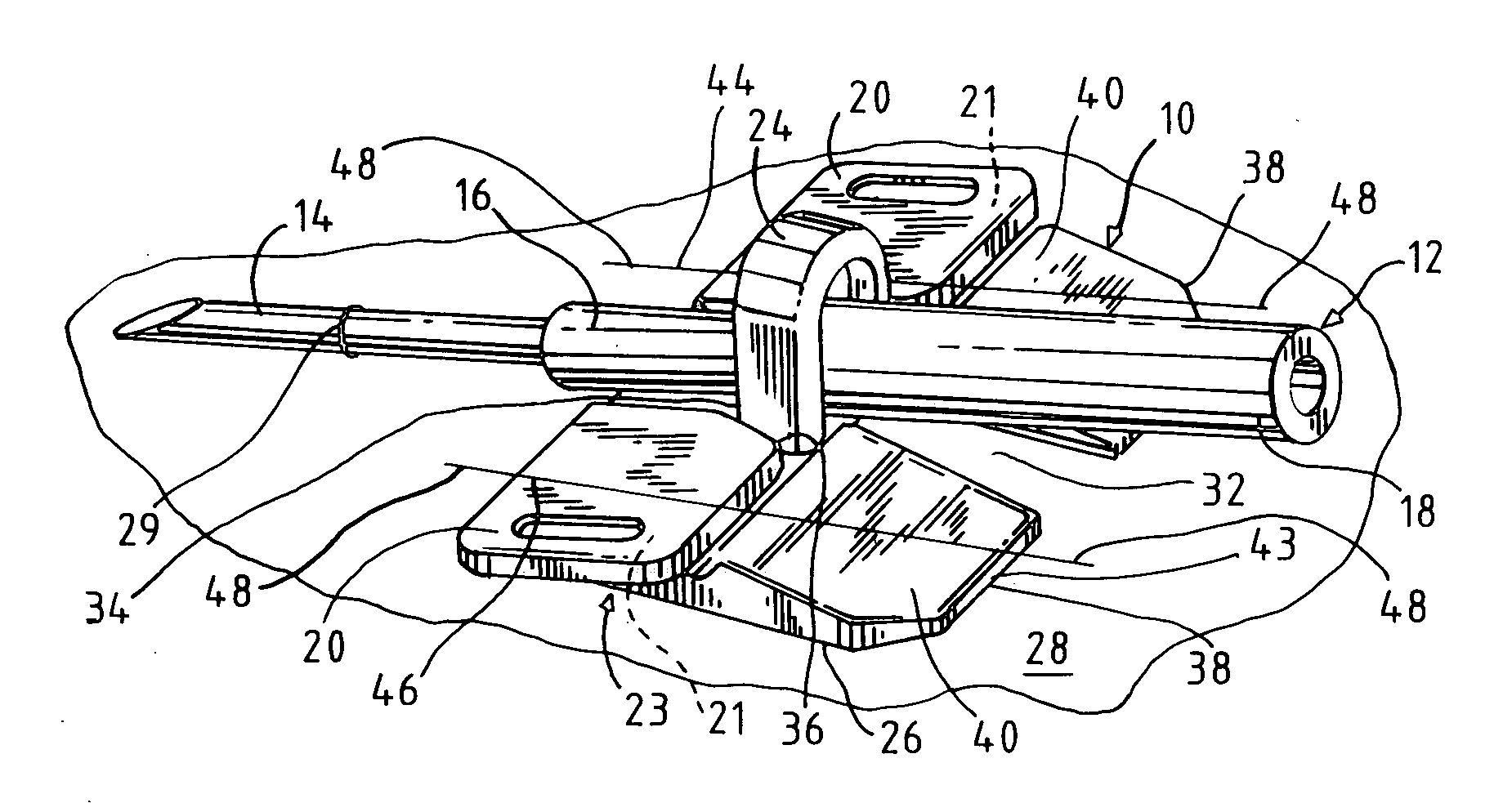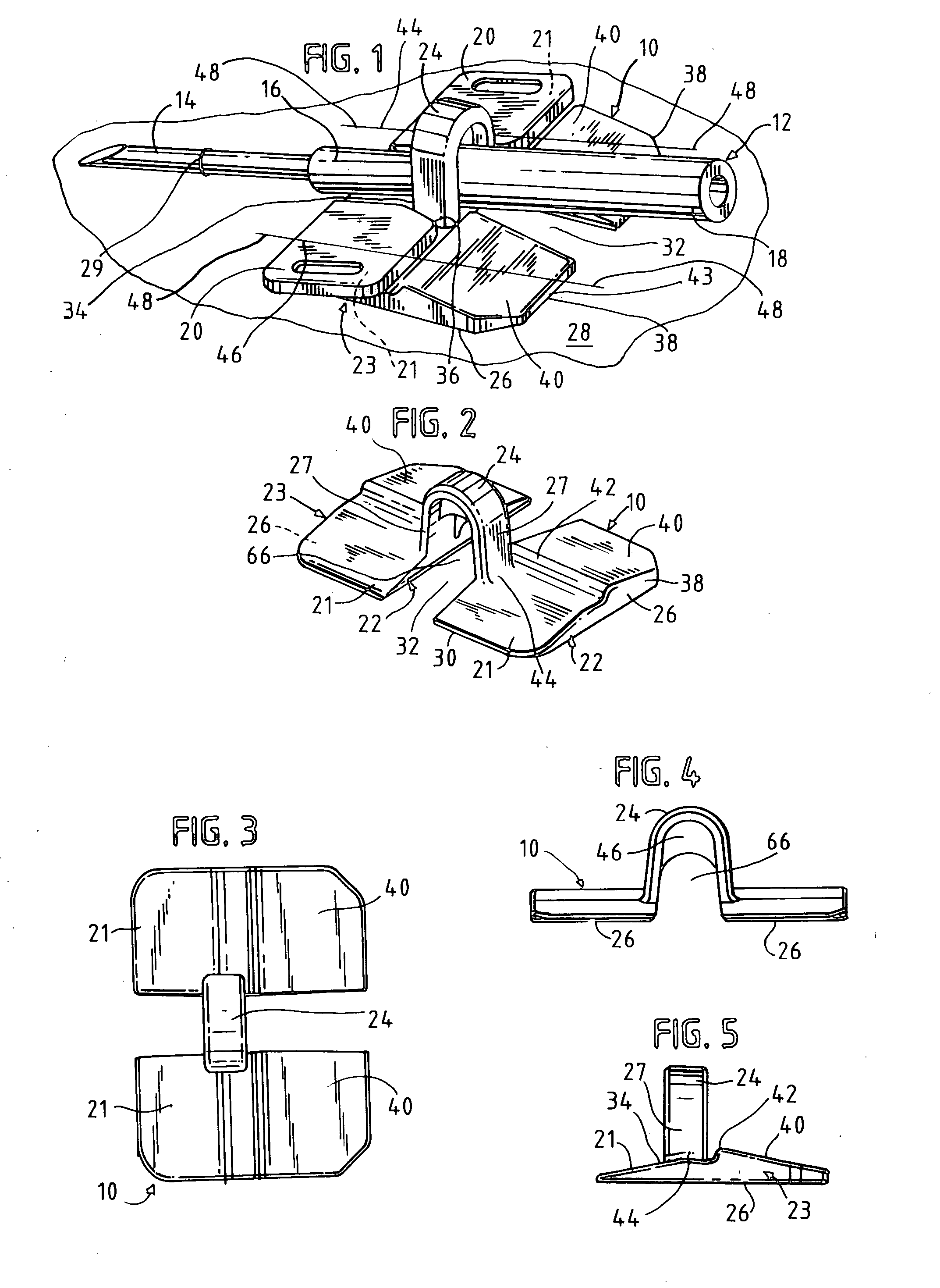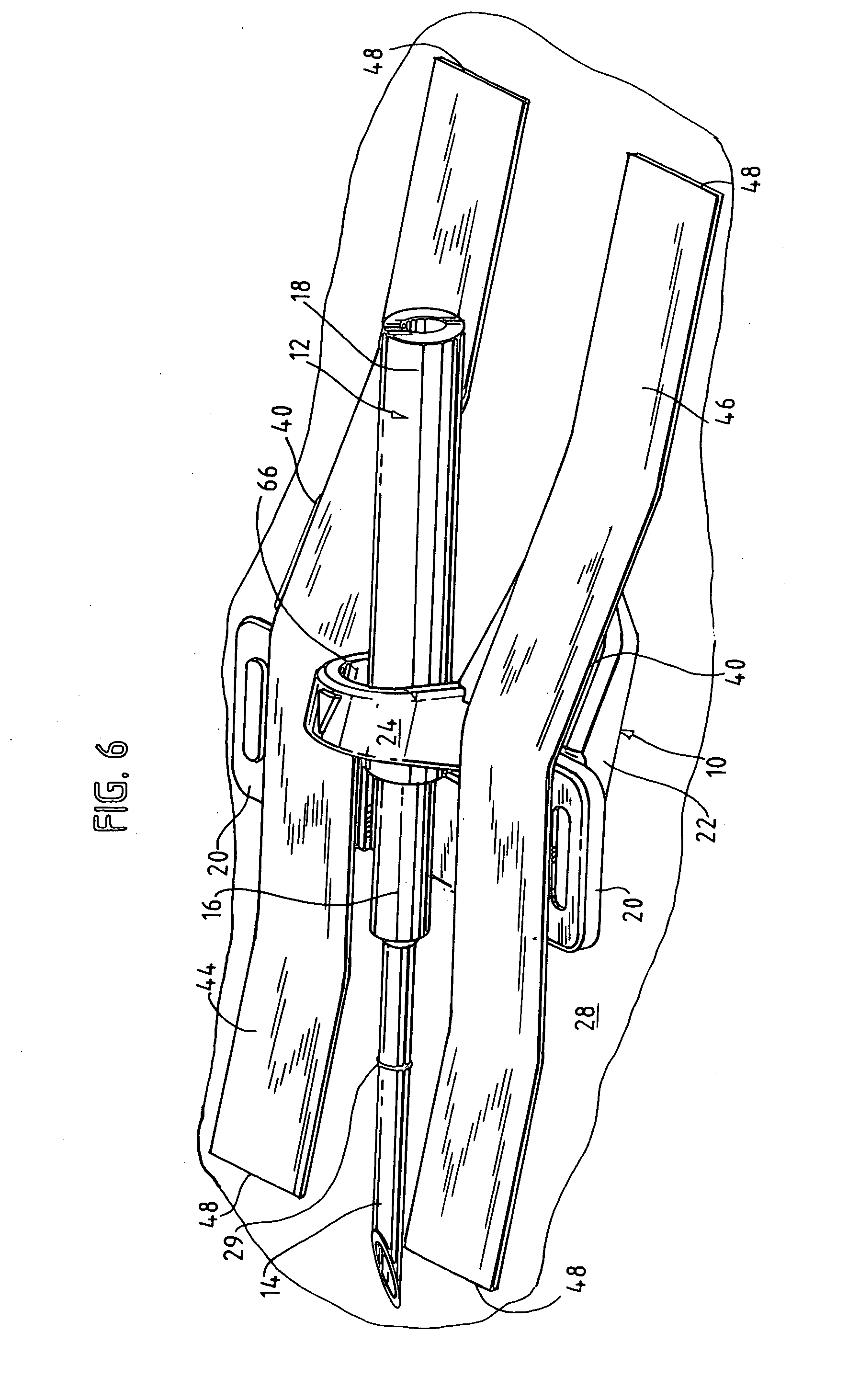Needle alignment, needle securement and vessel stabilization device
a securement and vessel technology, applied in the direction of intravenous devices, catheters, needles infusion, etc., can solve the problems of significant trauma to the cannulatable vessel, large loss of blood, and irregular skin overlaying of cannulatable portions of the vessel
- Summary
- Abstract
- Description
- Claims
- Application Information
AI Technical Summary
Benefits of technology
Problems solved by technology
Method used
Image
Examples
third embodiment
[0048]FIG. 8 is a perspective view of this invention.
[0049]FIG. 9 is a plan view of the device of FIG. 8.
[0050]FIG. 10 is an elevational view of the device of FIGS. 8 and 9, shown resting on the skin, with the tape and winged needle removed.
[0051]FIG. 11 is a perspective view of another embodiment of this invention.
[0052]FIG. 12 is a side elevational view of FIG. 11.
DESCRIPTION OF SPECIFIC EMBODIMENTS
[0053] Referring to the drawings, FIGS. 1 and 2 show an alignment and securement device 10 which carries an intravenous, cannula 14 as part of a hemodialysis winged fistula needle set 12. Needle set 12 comprises cannula 14, needle hub 16 and flexible tubing 18, which typically terminates in a conventional tubing connector (not shown). Extending from hub 16 are a pair of flexible wings 20, of conventional design.
[0054] Wings 20 are shown to be resting at an alignment angle on a first, angled upper surface 21 of a forward portion 22 of base 23 of alignment and securement device 10. I...
first embodiment
[0068] Referring to FIGS. 8-10, another embodiment of securement device 60 is disclosed. Securement device 60 defines a bifurcated base 23b, comprising two separate segments as shown, similar to base 23 of the As before, an inverted U-shaped, self-supporting strap 24b is provided, connecting the separate base segments 23b. Specifically, the embodiment of FIGS. 8-10 is similar to the embodiment of FIGS. 1-6, except as otherwise described herein.
[0069] Base segments 23b each define a first optionally angled upper surface 21b, and also a second optionally angled upper surface 40b, the surface angles being opposed to each other, and the same or different relative to bottom surface 67 and to the skin 64 when flat and placed thereon. As shown a central portion of bottom of surface 67 is spaced from the skin 64, while end portions 76, 78 are in contact with the skin. A plastic-saving recess 62 may optionally be placed on the underside of base segments 23b so that the flat bottom 67 is rai...
PUM
 Login to View More
Login to View More Abstract
Description
Claims
Application Information
 Login to View More
Login to View More - R&D
- Intellectual Property
- Life Sciences
- Materials
- Tech Scout
- Unparalleled Data Quality
- Higher Quality Content
- 60% Fewer Hallucinations
Browse by: Latest US Patents, China's latest patents, Technical Efficacy Thesaurus, Application Domain, Technology Topic, Popular Technical Reports.
© 2025 PatSnap. All rights reserved.Legal|Privacy policy|Modern Slavery Act Transparency Statement|Sitemap|About US| Contact US: help@patsnap.com



